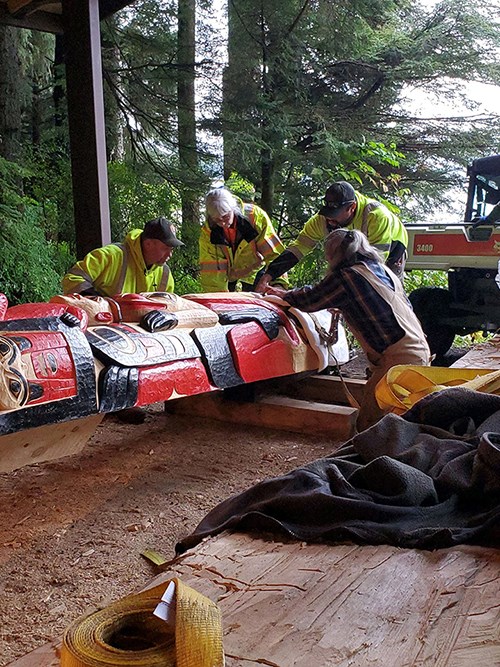
NPS Photo - Dwayne Travis
Sitka National Historical Park is on the traditional homeland of the Sheet’ka Lingit in Southeast Alaska. The Kaagwaantaan, Kiks.ádi, and Coho clans lived along the Indian River, well before the arrival of the Russians. Their hunting, fishing, and gathering plants traditions continued through the generations and up to the present day; hear more from resource users interviews through University of Alaska Fairbanks's Project Jukebox.
Important sites in the park include the 1804 battleground between the indigenous Kiks.ádi and the invading Russian traders. Learn more about historic events, changes brought by contact, and places preserved today.
The park also showcases totem poles that reflect Haida and Lingit/Tlingit traditions with symbolism that links to the past. The totem poles generally convey the ancestry or history of a particular clan, folklore or real-life experiences or commemorate a person of importance. One Lingit totem pole raised in the park during the late 1990s, is the Haa leelk'u has Kaastaheendax -- this name translates roughly as, “Our grandparents who were the very first people to use Indian River and the other people who were here, too.” This pole is considered unusual as it includes multi-clans and is seen as a public display of unity, putting old clan differences aside and working for the good of all Lingit people.
Read about George Benson, a Tlingit Master Carver for the Civilian Conservation Corp, (New Deal Era 1938-1941) and his role in perpetuating the art of traditional carving into the Twentieth Century.
The most current totem pole project has been the recarving of the Waasgo Legend Pole -- learn more from Tommy Joseph, Lingit wood carver.
Get to know Tim Flanery (Gaanax aya yáada), a Tlingit carving apprentice currently working with his mentor as they transform a 25-foot Sitka Spruce log into a traditional Tlingit dugout canoe.
Learn about weaving traditions as carried on by Teri Rofkar, a master in the traditional ways of Raven’s Tail weaving and Spruce Root Basketry. Teri was also an accomplished educator who passed on traditional Lingít weaving techniques to future generations so that the skills and art would not be lost.
Learn about Ellen Hope (Lang) Hays, born in Sitka, of Lingit heritage and who was dedicated to helping others with strengthening their indigenous connections. Among her many accomplishments was becoming the first Alaska Native woman to become a National Park Service Superintendent.
Visit the park website at: Sitka National Historical Park (U.S. National Park Service) (nps.gov)
Last updated: January 16, 2024
